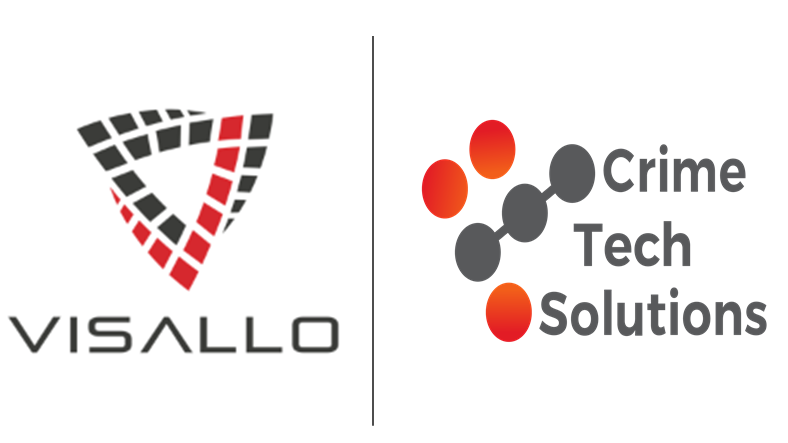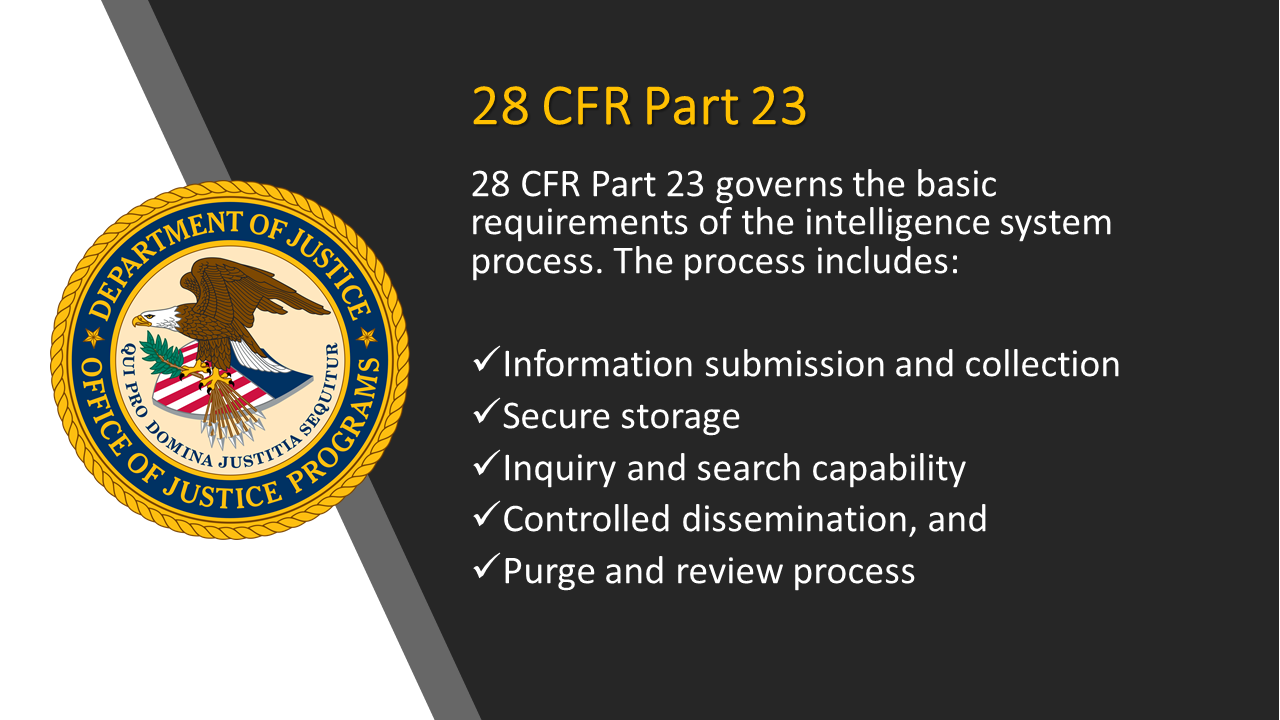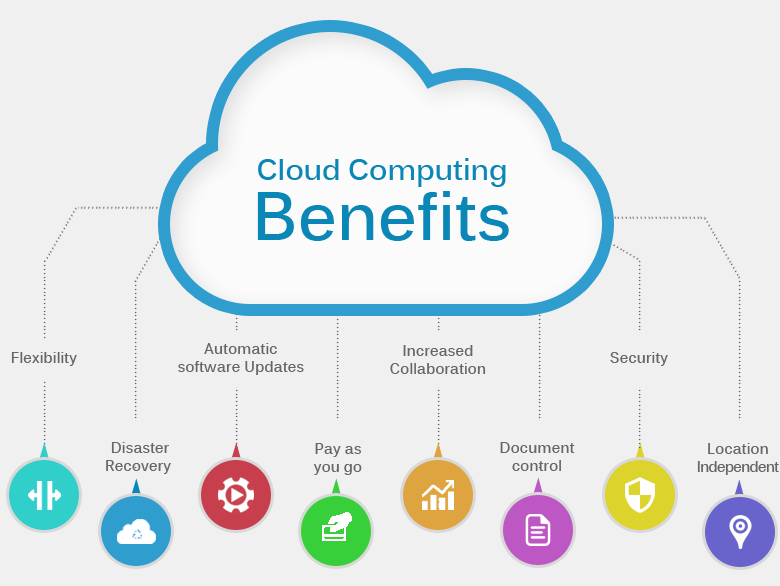Showing off all your hard work and in-depth analysis will be easier and faster than ever with Visallo 4.0, thanks to a host of new formatting and annotation options for graphs and maps. CLICK HERE for a sneak peak of what to expect with the new release.
Category Archives: law enforcement software
North Carolina county selects Case Closed Software for investigation management
(November 1, 2017) Austin, TX – Case Closed Software™, a leading provider of investigation case management software to law enforcement agencies, today announced that a large North Carolina Sheriff’s Office has signed a multi-year contract for their best-in-class software.

The Tar Hill State county, serving several hundred thousand residents, selected Case Closed Software after a nearly year-long search for sophisticated software that can help them work investigations more efficiently with a goal to close criminal cases more quickly.
According to Douglas Wood, President of Case Closed Software, the county selected his company’s offering due to the flexibility and overall feature set it offers.
“We’re thrilled to add this Sheriff’s Office to our delighted customer base”, said Mr. Wood. “One of the reasons we won the business is the fantastic references provided by our existing clientele, which include Police Departments, Sheriff’s Offices, State Investigation Bureaus, District Attorneys and more.”
Case Closed Software has begun implementation of the software and expects the County to be fully installed and trained by November 30, 2017.
Case Closed Software, who recently announced a strategic relationship with analytics software provider Visallo, develops and markets investigation management software, sophisticated investigation analytics, and advanced criminal intelligence software for law enforcement.
Data Analytics Transforms Policing
 Great article from our friends at Visallo!
Great article from our friends at Visallo!
As police find new methods of tracking and solving crime, their needs and priorities in a data analytics strategy are bound to continuously evolve.
Be sure to read the article at the popular Visallo Blog, and for more information on how Visallo and Crime Tech Solutions are changing the investigation analytics world, contact us with the form below.
[contact-form][contact-field label=”Name” type=”name” required=”1″ /][contact-field label=”Email” type=”email” required=”1″ /][contact-field label=”Website” type=”url” /][contact-field label=”Comment” type=”textarea” required=”1″ /][/contact-form]
Big Data Investigation Analytics: A Difference Maker for Law Enforcement
How Investigative Agencies do More with Less!
The investigative units of law enforcement agencies all around the world face many of the same challenges. Chief among those challenges is the fact that budgets are tightening, while resources are becoming more and more scarce. Even in the face of reduced funding, investigators are asked to deliver higher levels of service in their quest to solve and deter crime.
The key to doing ‘more’ with ‘less’ in law enforcement is really no different than in any other industry. That is, deploying resources in the most effective manner possible for the maximum value possible. The trick is using what the agency already knows to determine what the future may hold. What that all boils down to is Big Data Investigation Analytics.
Data in Law Enforcement comes in many forms, and is typically stored in disparate silos. Arrest records, calls for service, criminal intelligence, field reports, human resource data, telephone records, case management files, and so on. Together, the data from those systems can represent a virtual goldmine of investigative information if used correctly.
 ‘Correctly’ is the operative term, of course. The ability to turn these large data stores into actionable investigation intelligence requires more than a simple data warehouse or data mining tool, and for the most part police departments recognize this need. They understand that their data holds the key to understanding the hidden connections between people, places, and things – the lynchpin of any successful investigation.
‘Correctly’ is the operative term, of course. The ability to turn these large data stores into actionable investigation intelligence requires more than a simple data warehouse or data mining tool, and for the most part police departments recognize this need. They understand that their data holds the key to understanding the hidden connections between people, places, and things – the lynchpin of any successful investigation.
For years, law enforcement agencies and commercial organizations have built data mining tools and data warehouses. Unfortunately, these analytical techniques are no longer sufficient in an age of rapidly growing data. Moreover, much of the data that investigators need to access is unstructured text – word processing documents, narratives, search warrants, witness statements, email text, and more. By applying big data text analytics, investigators can begin to extract actionable insights from both structured and unstructured data.
 Big Data Investigation Analytics – such as those provided by Virginia based Visallo and California’s Palantir Technologies – are two examples that provide a powerful indexing architecture allowing investigators to find non-textual data, including multimedia files such as 911 calls, interrogation videos, and images. This architecture helps investigators find things that they simply could not find otherwise.
Big Data Investigation Analytics – such as those provided by Virginia based Visallo and California’s Palantir Technologies – are two examples that provide a powerful indexing architecture allowing investigators to find non-textual data, including multimedia files such as 911 calls, interrogation videos, and images. This architecture helps investigators find things that they simply could not find otherwise.
Finally, world-class investigation analytics provide a flexible graph visualization tool, as well. This user interface allows investigators to organize data through a variety of layout options, find hidden and non-obvious relationships between entities, and perform a variety of what-if scenarios.
 When paired with the robust investigative case management and criminal intelligence systems available from Crime Tech Solutions, big data investigation analytics build a foundation upon which investigators can solve more crimes, more quickly.
When paired with the robust investigative case management and criminal intelligence systems available from Crime Tech Solutions, big data investigation analytics build a foundation upon which investigators can solve more crimes, more quickly.
Without advanced investigation analytics, agencies often find themselves looking for a needle in a haystack. In fact, too often the needle is broken into several pieces spread across multiple haystacks. To simplify these tasks, investigative agencies must deploy the correct analytical technologies which have become a key element of doing more with less in the global investigation market. For more information on how Crime Tech Solutions and Visallo are changing the law enforcement analytics landscape, please contact us below!
[contact-form][contact-field label=”Name” type=”name” required=”1″ /][contact-field label=”Email” type=”email” required=”1″ /][contact-field label=”Website” type=”url” /][contact-field label=”Comment” type=”textarea” required=”1″ /][/contact-form]
Criminal Intelligence Management: Best Practices
Criminal intelligence analysts provide a key element of effective law enforcement, at both the tactical and strategic levels. Analysts study information related to suspects, trends, known criminals, and more. Through a process of gathering evaluating this information, trained intelligence analysts identify associations across various illegal activities over many locations.
 Government decisions and policies are heavily influenced by the insights provided by the criminal intelligence analyst, and police investigations use the intelligence in support of their missions. To that end, the main functions of criminal intelligence analysts include:
Government decisions and policies are heavily influenced by the insights provided by the criminal intelligence analyst, and police investigations use the intelligence in support of their missions. To that end, the main functions of criminal intelligence analysts include:
- Supporting law enforcement activities and large-scale investigations
- Providing an ongoing analysis of potential threats to public safety
- Helping senior officials and policy makers to deal with ever-evolving challenges and uncertainty
There are both tactical and strategic elements to the role of the criminal intelligence analyst. These categories differ with respect to the minutia of details, and the ‘customer’ or end-user of the intelligence.
A. Tactical Criminal Intelligence
Criminal intelligence of a tactical nature attempts to achieve a specific outcome related to law enforcement. Perhaps a disruption of organized criminal groups, a search warrant, seizure of assets, or an arrest.
Tactical criminal intelligence includes:
- The identification of potential connections between people, places, and other entities of interest… and their potential involvement in unlawful activities;
- Recognizing and reporting important gaps in intelligence data;
- Designing and creating detailed dossiers of suspected or confirmed criminals.
 B. Strategic Criminal Intelligence
B. Strategic Criminal Intelligence
Strategic analysis of criminal intelligence is expected to continuously educate policy makers and senior officials about current and evolving criminal activities and patterns. The benefits of strategic analysis tend to be realized over a longer period of time than does tactical analysis.
Emerging criminal trends and activities sit at the core of strategic intelligence analysis. The intelligence can provide advanced warning of potential threats, and can provide law enforcement officials with the information required to prepare their agencies for emerging illegal actions.
Strategic criminal intelligence analysis includes the recognition and documentation of:
- Evolving trends and patterns of illegal activities
- Developing threats
- Modus operandi
- The possible effect of demographics, technologies, and evolving socio-economic factors on criminal activities
 D. Abuse and Misuse of Criminal Intelligence
D. Abuse and Misuse of Criminal Intelligence
The misuse and/or improper storage and unauthorized access to sensitive criminal intelligence data has always been a concern of civil liberty advocates, and has recently been brought to light again with stories regarding misuse of California’s CalGang database. Given the diverse and growing requirements of criminal intelligence management, certain best-practices and policies have evolved in order to help law enforcement agencies collect, store, and disseminate this important criminal intelligence without invading individual rights to privacy.
E. Best Practices for Criminal Intelligence Management
 Specifically, 28 CFR Part 23 is a federal regulation that provides guidance to law enforcement agencies on the standards for implementing and operating federally funded criminal intelligence systems that cross jurisdictions. The protection of individual constitutional rights and civil liberties sits at the core of 28 CFR Part 23. Every American, of course, is afforded a reasonable expectation of privacy. The guidelines outline specific methods to gather, store, disseminate, review, and purge criminal intelligence data.
Specifically, 28 CFR Part 23 is a federal regulation that provides guidance to law enforcement agencies on the standards for implementing and operating federally funded criminal intelligence systems that cross jurisdictions. The protection of individual constitutional rights and civil liberties sits at the core of 28 CFR Part 23. Every American, of course, is afforded a reasonable expectation of privacy. The guidelines outline specific methods to gather, store, disseminate, review, and purge criminal intelligence data.
Recommending the use of these guidelines is The National Criminal Intelligence Sharing Plan (NCISP). NCISP suggests that the regulations ensure that the operations of a criminal intelligence system protect the rights and privacy of individuals and organizations. Importantly, The NCISP suggests that criminal intelligence groups adhere to 28 CFR Part 23, irrespective of whether or not the system was implemented using federal funds and grants.
The criminal intelligence guidelines prescribed by 28 CFR Part 23 have been identified as the minimal policies and rules for sharing data across law enforcement agencies.

The best practices prescribed within the regulation include specific guidelines related to:
- Proper procedures for querying, reviewing, sharing, validating, and purging of criminal intelligence data.
- Multi-jurisdictional memorandums and participation agreements (if applicable).
- The gathering and submission of criminal intelligence information.
- The definition of key criminal intelligence terminology, including ‘the right to know’ and ‘the need to know’.
- The specific activities that may or may not be maintained within the criminal intelligence system.
- Individual rights to access the criminal intelligence systems.
- Security requirements including the auditing and inspection of data.
F. An Excellent Solution
 IntelNexus™ from software developer Crime Tech Solutions is an affordable, yet powerful criminal intelligence management system that complies with the regulations and best practices set forth in 28 CFR Part 23. Whether or not an agency (or agencies) absolutely require compliance to 28 CFR Part 23, the software lays out a framework and enforces the principles that should be incorporated into the criminal intelligence database. IntelNexus offers the foundation for gathering, storing, maintaining, sharing, authenticating, and purging criminal intelligence while ensuring the privacy and civil rights afforded to us all.
IntelNexus™ from software developer Crime Tech Solutions is an affordable, yet powerful criminal intelligence management system that complies with the regulations and best practices set forth in 28 CFR Part 23. Whether or not an agency (or agencies) absolutely require compliance to 28 CFR Part 23, the software lays out a framework and enforces the principles that should be incorporated into the criminal intelligence database. IntelNexus offers the foundation for gathering, storing, maintaining, sharing, authenticating, and purging criminal intelligence while ensuring the privacy and civil rights afforded to us all.
The company also develops the popular Case Closed™ investigation case management software, and provides a suite of advanced crime analytics and link analysis software.
Criminal Intelligence Databases: Violations of privacy rights are the exception, not the rule.
 The notion that law enforcement fusion centers regularly violate individuals’ privacy rights as they capture intelligence on gangs, terrorist activities, organized crime, and other threats to public safety is simply not true. That, according to a study published in the Journal of Police and Criminal Psychology.
The notion that law enforcement fusion centers regularly violate individuals’ privacy rights as they capture intelligence on gangs, terrorist activities, organized crime, and other threats to public safety is simply not true. That, according to a study published in the Journal of Police and Criminal Psychology.The paper, “Law Enforcement Fusion Centers: Cultivating an Information Sharing Environment while Safeguarding Privacy,” was authored by Jeremy Carter, an assistant professor of Public and Environmental Affairs at Indiana University-Purdue University Indianapolis. His article carefully addresses the privacy-rights issue of criminal intelligence gathering, among others.
 There are approximately 80 fusion centers in the United States. They were created in response to the 9/11 terrorist attacks. The attacks exposed the requirement for greater information sharing and improved intelligence capabilities at all law enforcement levels. According to the article’s author, the idea was to have the key pieces of data funneled into fusion centers so that highly trained analysts could stay atop of threats and correspond with local law enforcement agencies on these potential threats.
There are approximately 80 fusion centers in the United States. They were created in response to the 9/11 terrorist attacks. The attacks exposed the requirement for greater information sharing and improved intelligence capabilities at all law enforcement levels. According to the article’s author, the idea was to have the key pieces of data funneled into fusion centers so that highly trained analysts could stay atop of threats and correspond with local law enforcement agencies on these potential threats.Designed with a view to enhance information-sharing among agencies, fusion centers act as ‘hubs’ of data and intelligence on gang activities, terrorist cells, organized crime, and other public safety threats. Vast amounts have data has been collected, and concerns about individual privacy and civil rights have ensued. The very legitimacy of these fusion centers has been called into question.
 The notion that law enforcement fusion centers represent ‘Big Brother’, and that data is being stored and disseminated about people irrespective of whether they are suspected of criminal activity is simply wrong, according to Professor Carter.
The notion that law enforcement fusion centers represent ‘Big Brother’, and that data is being stored and disseminated about people irrespective of whether they are suspected of criminal activity is simply wrong, according to Professor Carter.Still, concerns remain about who can access the data, and for what purpose. However, a survey of fusion centers across the country suggests that they take appropriate steps to safeguard individual privacy via something called Federal Regulatory Code CFR 28 Part 23.
 “Fusion centers are following the federal regulatory code, 28 CFR Part 23, that is the legal standard for collecting information,” Carter said. “That code says you have to establish a criminal predicate, basically probable cause, to keep information on identifiable individuals.”
“Fusion centers are following the federal regulatory code, 28 CFR Part 23, that is the legal standard for collecting information,” Carter said. “That code says you have to establish a criminal predicate, basically probable cause, to keep information on identifiable individuals.”Additionally, the majority of the fusion centers have implemented strong controls that provide built-in safeguards that protect the privacy of individuals. The fusion centers are also regularly audited to ensure that only the correct type of data is gathered, and that is stored and disseminated in a need-to-know basis.
 Crime Tech Solutions develops and markets a suite of crime fighting software including IntelNexus™, a criminal intelligence database system that complies with the above mentioned code 28 CFR Part 23. The company also provides software for investigation case management, advanced crime analytics, and link/social network analysis.
Crime Tech Solutions develops and markets a suite of crime fighting software including IntelNexus™, a criminal intelligence database system that complies with the above mentioned code 28 CFR Part 23. The company also provides software for investigation case management, advanced crime analytics, and link/social network analysis.
Gang Database leads to Arrest
El Paso, TX – Gang investigators were told a suspect in surveillance footage matched the description of “Flaco”, a known gang member in the area.
A search of a gang database identified “Flaco” as 32 year old Fidel Trevino, a court document states.
See the original story HERE at kvia.com
Crime Tech Solutions develops and markets the industry leading GangBuster™ gang tracking software for law enforcement. The company offers a suite of crime-fighting software including case management, link analysis, criminal intelligence management, and advanced crime analytics.
The Case for Software as a Service in Law Enforcement
 State and local law enforcement agencies face a growing number of challenges due to lack of resources and the ever-dwindling public coffers. As a result of legacy technologies that compound costs – through maintenance fees, implementation expenses, hardware purchases, and software upgrades – agencies are constantly challenged to do more with less.
State and local law enforcement agencies face a growing number of challenges due to lack of resources and the ever-dwindling public coffers. As a result of legacy technologies that compound costs – through maintenance fees, implementation expenses, hardware purchases, and software upgrades – agencies are constantly challenged to do more with less.
To reduce cost and increase flexibility, more and more law enforcement departments are motivated to try cloud computing- Software as a service (SaaS). The benefits of SaaS to law enforcement agencies are many and varied.
Reduced Investment in Software Setup
 The majority of the law enforcement organizations already have the needed IT infrastructure to access SaaS applications. The essential requirement is a secure and stable Internet connection with devices that can access the web.
The majority of the law enforcement organizations already have the needed IT infrastructure to access SaaS applications. The essential requirement is a secure and stable Internet connection with devices that can access the web.
Cloud Computing Lessens Technical Effort
With SaaS solutions, agencies can easily store data or run applications which are accessible from any web-connected device at anywhere and anytime. Instead of investing in capital expenses such as software and computer servers, departments can effectively rent these on a variable payment plan.
Rapid Deployment
SaaS is typically ready-baked for its adopters. Through SaaS, agencies eliminate much of the delays of a traditional software deployment. Once subscribed, users can literally begin enjoying the benefit of the platform immediately. Contrast that to standard software deployments which can take weeks or months to spin up.

System Maintenance is Automatic
Maintenance costs for SaaS subscribers are almost free. As part of their subscription fee, the SaaS provider manages upgrades, bandwidth adjustment, and bug fixes. It removes many of the headaches that an agency’s IT group experiences with new software versions and updates.
Traditional Policies Can Confound Adoption
Even though many US agencies are already using – or considering – cloud computing, adoption of SaaS is still a tricky decision for law enforcement. Because of the need to safeguard sensitive and confidential information that is saved offsite, the pace is slower than other market segments. That tide, however, is turning.
Case Closed Software is a leading provider of investigative case management software for law enforcement agencies across the country.
Tennessee county turns to Case Closed for investigation management
(March 27, 2017) Case Closed™ Software, a division of crime fighting software leader Crime Tech Solutions, LLC, announced today that they have signed contract with a large well-known and historic county in Tennessee.
 The mid-sized Sheriff’s Department in the Volunteer State chose Case Closed Software after a long, thorough search for a solution provider capable of delivering “a feature-rich, affordable solution for managing investigations and the investigative unit”. The core modules of the software include Investigative Case Management, Link Analysis, Confidential Informants Management, Property & Evidence, Gang Tracking, and Departmental Reporting. According to a company spokesperson, the software also includes a mobile application for investigators in the field, and real-time alerting designed to help agencies solve crimes faster.
The mid-sized Sheriff’s Department in the Volunteer State chose Case Closed Software after a long, thorough search for a solution provider capable of delivering “a feature-rich, affordable solution for managing investigations and the investigative unit”. The core modules of the software include Investigative Case Management, Link Analysis, Confidential Informants Management, Property & Evidence, Gang Tracking, and Departmental Reporting. According to a company spokesperson, the software also includes a mobile application for investigators in the field, and real-time alerting designed to help agencies solve crimes faster.
Case Closed Software said that the solution is being installed immediately, and that the agency will be fully implemented by April 30, 2017.
For more information on Case Closed, visit www.caseclosedsoftware.com

A Look at Digital Policing
For law enforcement and other police service agencies, the ability to rapidly manage and interpret massive amounts of data is of paramount importance. Front line officers require timely and accurate data that enables intelligence-led decision making, and officers must be deployed proactively in order to deter and prevent criminal behavior.
 As we have written before, the true lifeblood of effective policing is data. With disparate and poorly integrated systems, however, the intelligence that can be gleaned from that data is mitigated. The information is too often hidden or lost.
As we have written before, the true lifeblood of effective policing is data. With disparate and poorly integrated systems, however, the intelligence that can be gleaned from that data is mitigated. The information is too often hidden or lost.
In order to better utilize data – coming from sources such as Records Management Systems, Computer Aided Dispatch, Criminal Intelligence Systems, and other such repositories – innovative law enforcement agencies turn to technology-agnostic, scalable analytics platforms which blend historical and real-time data to both solve today’s crimes and predict tomorrow’s. Supported by purpose-built law enforcement analytics, agencies can keep pace with growing volumes of data and stay one step ahead of the criminals via actionable insights.

For disparate data to be transformed to actionable insights, law enforcement agencies must deal with several challenges:
- Timeliness – Unlike fine wine, data tends to lose value over time. Crime happens in real time, and what was the case six months ago may not be the case today.
- Reliability – The data absolutely must be trusted by the officers entrusted with using it.
- Fragmentation – If the data is overly fragmented or otherwise unavailable, it becomes cumbersome to use and holds little value.
- Auditability – Without a clear and recognized audit trail, agencies are not able to effectively track the decisions made in the field versus what the analytics pointed to.
 An analytics solution helps blend data from disparate sources in order to provide officers with a trusted, single view of the truth. Simply put, the right analytics software will help agencies manage the challenges above.
An analytics solution helps blend data from disparate sources in order to provide officers with a trusted, single view of the truth. Simply put, the right analytics software will help agencies manage the challenges above.
While there has been a ton of negative news related to predictive policing, recently, using an analytics platform approach allows agencies to consolidate, analyze, and utilize ALL of their data. This analysis can – and does – help agencies become more efficient and more effective.

